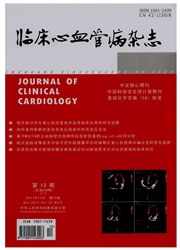

 中文摘要:
中文摘要:
In order to confirm the hypothesis that during acute hypoxia, the antiarrhythmic peptide (AAP10) could improve conductance by changing the phosphorylation state of connexin43 (Cx43), isolated perfused rat hearts were randomly divided into three groups: control, hypoxia and AAP10 (n=9 in each group). The change in Cx43 phosphorylation was tested by Western-blot; the distribu- tion of Cx43 was observed by confocal immunofluorescence microscopy. Western-blot analysis re- vealed that the expression of total Cx43 protein was significantly decreased during acute hypoxia, while nonphosphorylated Cx43 (NP-Cx43) was unchanged. AAP10 could increase the expression of total Cx43 protein, but had no effects on the NP-Cx43 protein. Immunofluorescence study showed that during acute hypoxia, both total Cx43 and NP-Cx43 proteins were greatly decreased, while AAP10 only increased the expression of total Cx43 protein, but had no effect of the NP-Cx43 protein expression. These findings suggested that the decrease of intercellular communication may be associ- ated with the reduction of phosphorylated Cx43 (p-Cx43) and translocation of NP-Cx43 from the surface of gap junction into intracellular pools during acute hypoxia. AAP10 can improve intercelluar communication by enhancing phosphorylation of Cx43.
 同期刊论文项目
同期刊论文项目
 同项目期刊论文
同项目期刊论文
 期刊信息
期刊信息
